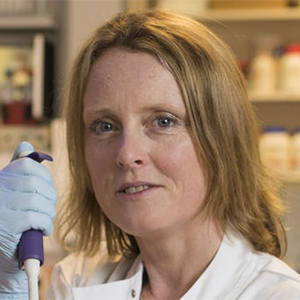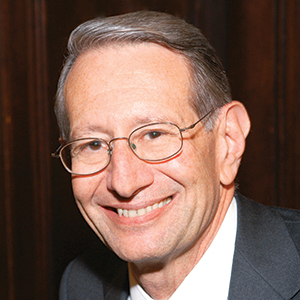Michael J. O. Wakelam (1955 – 2020)
Michael Wakelam, a noted British biochemist, institute director and associate editor of the Journal of Lipid Research, who pioneered studies into elusive signaling lipids in health and disease including developing innovative ways to measure them, died March 31 in the United Kingdom.
Education and career
Michael was born July 15, 1955. Following his secondary education, he attended the University of Birmingham, graduating in 1977 with a B.Sc. in medical biochemistry. He stayed on at Birmingham for his Ph.D., graduating in 1980. During this time, Michael met Jane Fensome, who became his wife in December 1980. After his Ph.D., Michael moved with Jane to Konstanz, Germany, for postdoctoral studies, followed by a return to London in 1983 on a Beit Memorial Fellowship.
Michael worked in the department of biochemistry at Imperial College until 1985, when he moved to the University of Glasgow as a lecturer. He returned to Birmingham as a professor of molecular pharmacology in 1993 and was based there until 2006, when he moved to the Babraham Institute, Cambridge, as institute director. During this time, Jane and Michael welcomed their sons, Alex and Patrick, into the world.
The Biochemical Society awarded Michael the Morton Award Lectureship in 2018 for outstanding contributions to research in lipid biochemistry. He was elected a member of the Academia Europaea in 2019.
Reflections on 32P, IP3 and mass spectrometry
During Michael’s time in Germany, he became interested in lipids because of his work on the sugar molecule inositol, the headgroup for phosphoinositide phospholipids. Measuring inositol phosphates was not trivial and required 32P-labeled IP3, which was generated from red blood cell ghosts (as invented by Peter Downes). But the 32P half-life of two weeks was an issue, and Michael had to keep generating new batches before using up the previous one. When Michael and Robin Irvine met up in London in the mid-1980s, they discovered both were making the same thing, and from then on they coordinated their efforts; each time one made a batch, they would split it and send half to the other, which cut the number of times they made batches by half. The thought that they were happily sending 32P through the post makes Robin a little wobbly at the knees now.
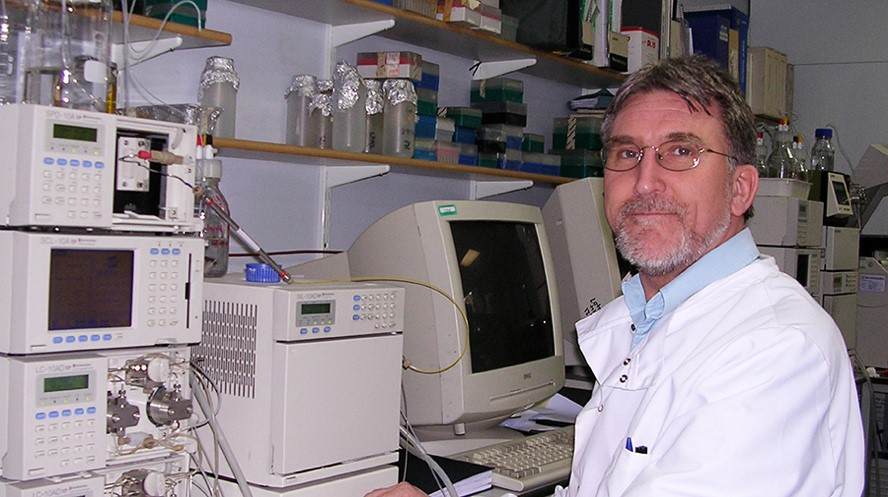
Michael continued his work on inositols after his move to Glasgow. He made several seminal discoveries, including that diacylglycerol is generated from phosphatidylcholine. Working with Susan Pyne (then Palmer), he developed a mass assay for IP3, which subsequently was marketed by Amersham. Michael’s lab was known for being exciting, vibrant and hardworking. His infectious passion for research abounded, and results were discussed over beers on Byres Road almost in real time.
When Michael returned to Birmingham in 1993, he had moved fully into lipid mass spectrometry, leaving behind thin-layer chromatography for new approaches that produced unprecedented information about how lipids behave in cells, particularly in cancer. He developed state-of-the-art methods that enabled key discoveries concerning the roles of PLD1 and PLD2 in signaling, uncovering the role of the PH domain in PIP2 regulation. He published seminal papers in the Journal of Lipid Research and Nature Methods, describing methods for phosphoinositide analysis that included crucial steps that stabilized the molecules sufficiently for MS analysis.
Importance of scientific conferences
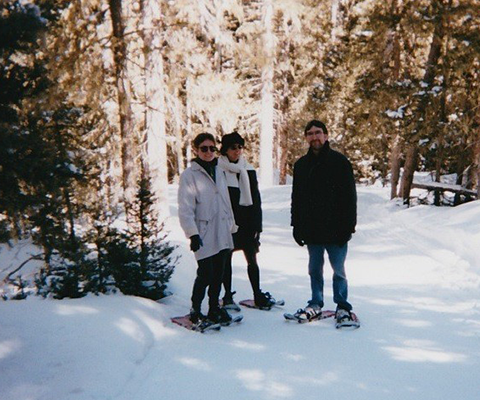
Michael enjoyed scientific meetings with other lipidologists, many of whom were close collaborators and friends. During a 1998 Keystone symposium on lipids in Taos, New Mexico, Michael and Robin Irvine set out to go skiing, but neither could ski so they decided to hire snowshoes and go for a hike high in the mountains instead. Michael no doubt enjoyed the sunshine and snow while talking science with colleagues. We will remember him for his wonderful sense of humor and friendliness; he always was laughing.
Michael and Dan Raben shared an interest in signaling lipids and regulation of their enzymes. The two met at American Society for Biochemistry and Molecular Biology annual meetings, the Lipid Gordon Research Conferences, and Federation of American Societies for Experimental Biology conferences, where the excitement of their scientific discussions was complemented by Michael’s humor and caring demeanor. Dan always will remember Michael’s enthusiasm, intelligence and generosity of scientific spirit.
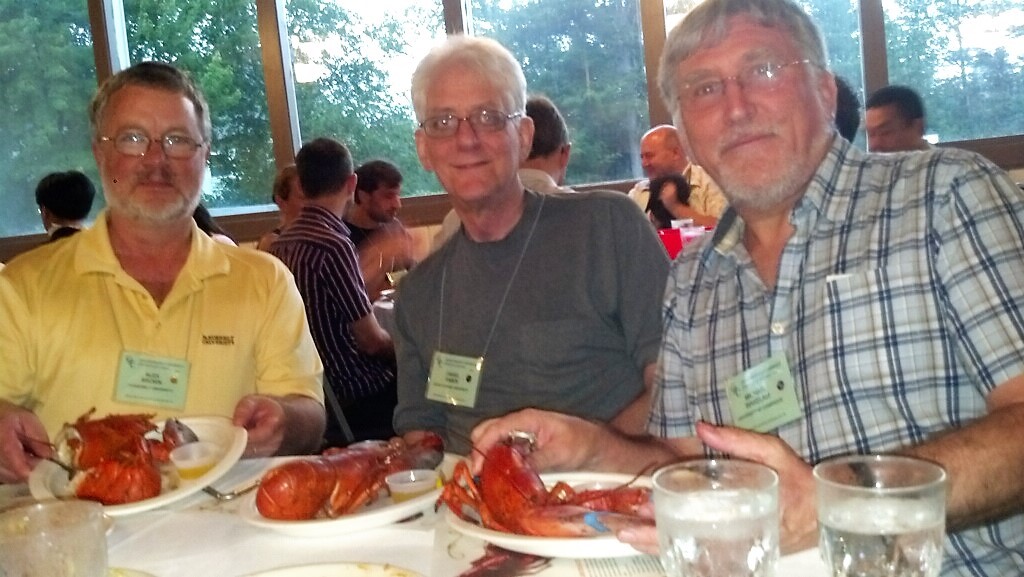
Michael was also a scholar. His deep-rooted interest in philosophy of science led him to read up on the conceptual foundations of quantum mechanics. One of his last passions was discussing with his colleagues the philosophical foundations of the field, having read “Are Quanta Real” by J.M. Jauch during a systems biology conference in Crete in 2019. Discussions (particularly with Shankar Subramaniam, who introduced him to the book) went on late into the evening.
Babraham onward and LIPID MAPS
In 2007, Michael became director of the Babraham. He was motivated to take this role by both the challenge of leading a large institute and proximity to cutting-edge phosphoinositide researchers who could benefit from his analytical capabilities. He successfully juggled multiple roles, including rapidly developing a campus with a significant industrial footprint while overseeing a successful lipidomics facility. Colleagues at Babraham, including Wolf Reik, Simon Rudge, Phillip Hawkins, Len Stephens and Simon Cook, remember Michael as a terrific role model who lived for his research and the good of the wider institute as well as a consensus seeker who used his emotional intelligence to great effect and hardly ever overruled others.

California. Pictured, from left to right, are Christian Raetz, Masahiro Nishijima, Takao Shimizu, Eoin Fahy, Edward Dennis, Manish Sud,
Michael Wakelam, Fritz Spener, Robert Murphy, Yousuke Seyama, Gerrit van Meer and Shankar Subramaniam.
Michael became heavily involved in the lipidomics movement around the time he moved to Babraham. According to Fritz Spener of Graz, Austria, who shared with us an obituary he wrote with Christian Wolfrum and Wolf Reik for Nature Metabolism, “Editorials about lipidomics appeared in Europe in 2003, but when news arrived from the U.S. that under Ed Dennis’ leadership the huge Lipid Metabolites and Pathways Strategy, or LIPID MAPS, project was granted, this started a major undertaking. In response, Michael helped convince the Directorate General 12 of the European Union to solicit applications for a large collaborative project on high-throughput analysis of lipids and lipid–protein interactions in mammalian cells.” Then Michael’s group and 20 other investigators submitted a successful application for the LipidomicNet project in 2008.
Spener shared that the project’s coordinator dubbed Michael and other LipidomicNet leaders the “Viennese Coffee Club” because their sometimes diverging opinions led to hilarious and, in the end, fruitful discussions. For example, Viennese Coffee Club members got irritated with literature reporting incorrect MS data, as the levels of structural elucidation claimed for lipid species were not in accord with the existing instrumental resolving power. As a result, a shorthand annotation for the correct presentation of lipid MS data was developed and published in the Journal of Lipid Research in 2013 with Michael as senior author. This publication subsequently was adopted by the LIPID MAPS International Lipid Classification and Nomenclature Committee, or ILCNC.
The LipidomicNet project strengthened E.U.–U.S. relations; European researchers, among them Michael, took on active roles in the ILCNC and were invited to be co-authors of two fundamental classification papers published in the Journal of Lipid Research in 2005 and 2009. By 2013, though, the LipidomicNet grant from the EU had ended, and the long-running LIPID MAPS grant in the U.S. was ending as well.
Michael and Valerie O’Donnell from Cardiff University teamed up with Ed Dennis and Shankar Subramaniam from the University of California, San Diego, to secure a follow-up LIPID MAPS grant from the British Wellcome Trust in 2017. This was a big relief for lipidologists, in particular those involved in lipidomics; this grant safeguards and further develops not only the informative website but also precious databases. Certainly, the competence of managing big databases at Babraham is an asset, as was Michael’s relation to the European Bioinformatics Institute in Cambridge.
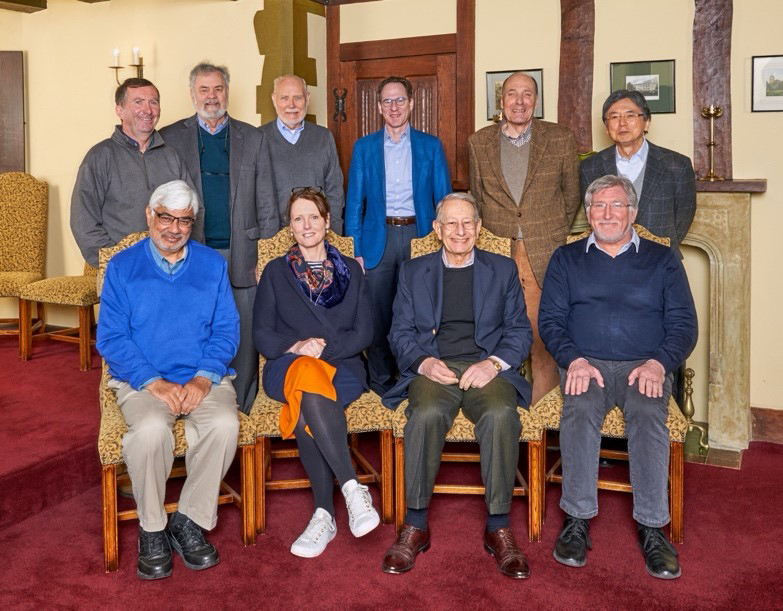
Committee was held in the Cardiff Castle in Cardiff, U.K., in March 2017. Pictured in front, from right to left, are Michael Wakelam, Edward Dennis,
Valerie O’Donnell and Shankar Subramaniam; in back are Takao Shimizu, Fritz Spener, Marcus Wenk, Al Merrill, Robert Murphy and Eoin Fahy.
When the grant was funded, Michael’s reaction was to say, “That is absolutely brilliant! Well done, Valerie.”
As part of the new funding, the LIPID MAPS databases were moved to Babraham. Michael’s input was essential, providing the new informatics home for the project and working closely with Valerie O’Donnell, Edward Dennis, Shankar Subramaniam and the ILCNC advisory committee. Michael was intimately involved in planning the next renewal cycle for the LIPID MAPS grant to the Wellcome Trust.
Michael had planned to step down from the Babraham directorship in late 2020, and we were excited that this would allow Michael to get back in the lab and spearhead the LIPID MAPS renewal application. It feels especially tragic for us all that Michael won’t be part of our next phase of LIPID MAPS.
Note: Edward Dennis and Valerie O’Donnell also have published a memorial article about Michael Wakelam in the Journal of Lipid Research.
Enjoy reading ASBMB Today?
Become a member to receive the print edition four times a year and the digital edition monthly.
Learn moreGet the latest from ASBMB Today
Enter your email address, and we’ll send you a weekly email with recent articles, interviews and more.
Latest in People
People highlights or most popular articles

In memoriam: Michael J. Chamberlin
He discovered RNA polymerase and was an ASBMB member for nearly 60 years.

Building the blueprint to block HIV
Wesley Sundquist will present his work on the HIV capsid and revolutionary drug, Lenacapavir, at the ASBMB Annual Meeting, March 7–10, in Maryland.

In memoriam: Alan G. Goodridge
He made pioneering discoveries on lipid metabolism and was an ASBMB member since 1971.

Alrubaye wins research and teaching awards
He was honored at the NACTA 2025 conference for the Educator Award and at the U of A State and National Awards reception for the Faculty Gold Medal.

Designing life’s building blocks with AI
Tanja Kortemme, a professor at the University of California, San Francisco, will discuss her research using computational biology to engineer proteins at the 2026 ASBMB Annual Meeting.

Jordahl named Gilliam Fellow
He will receive three years of funding to support his thesis research.

